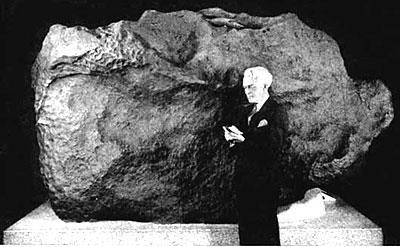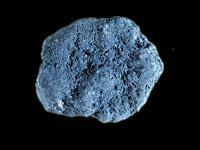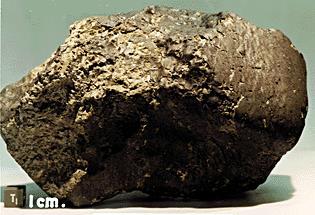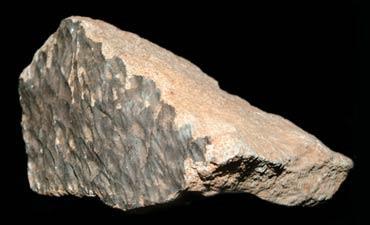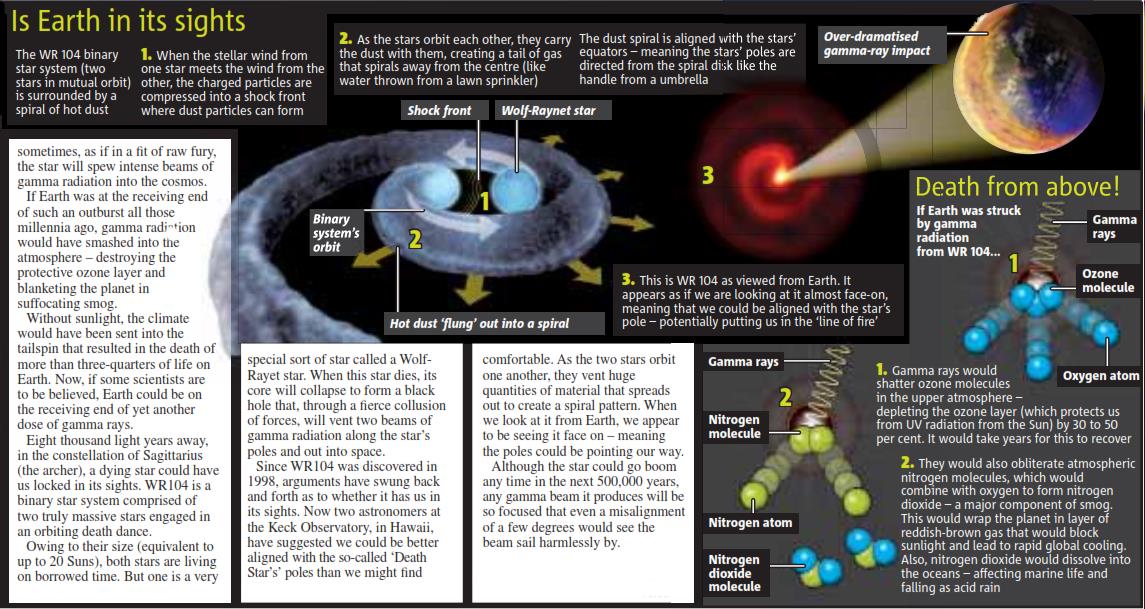Famous Meteorite
Ahnighito Meteorite
The largest part of the Cape York meteorite and the largest meteorite on display in any museum (The American Museum of Natural History in New York).
Alais Meteorite
A meteorite of the type known as a carbonaceous chondrite, which fell in France on Mar. 15, 1806, and was later examined by Jöns Jakob Berzelius. In his published analysis of 1834, Berzelius claimed that, in addition to clay minerals, the meteorite contained complex carbon compounds which he had distilled from a specimen extracted with water. This announcement ushered in the study of organic substances that have originated beyond the Earth.
The oldest-known SNC meteorite. ALH 84001 originated on the surface of Mars, is gray-green in color, measures 15 × 10 × 8 cm (6 × 4 × 3 in.), and weighs 1.94 kg (4.2 lb). It was recovered by a team from the ANSMET program on Dec. 27, 1984, from the Allan Hills region of Antarctica, where it had lain undisturbed since its arrival on Earth about 13,000 years ago.
Geological analysis of ALH 84001 has revealed something of its history. It formed originally from molten lava which possibly issued from an ancient martian volcano, about 4.5 billion years ago. Some 4 billion years ago, it was heated again and deformed by a strong shock, probably resulting from the nearby impact of an asteroid or large meteorite. Then, about 3.6 billion years ago, some kind of liquid flowed through the rock and
ALH 84001 Meteorite
Allende Meteorite
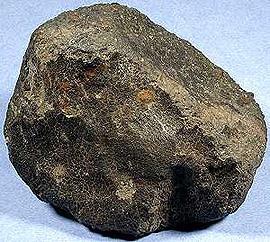
A meteorite of the type known as a carbonaceous chondrite, which fell near the village of Pueblito de Allende, in the Mexican state of Chihuahua, on February 8, 1969. Several tons of material were scattered over an area measuring 48 km by 7 km.
Specimens of the meteorite were found to contain a fine-grained carbon-rich matrix studded with many chondrules, both matrix and chondrules consisting predominantly of the mineral olivine. Close examination of the chondrules, by a team from Case Western Reserve University,1 revealed tiny black markings, up to 10 trillion per square centimeter, which were absent from the matrix and interpreted as evidence of radiation damage. Similar structures have turned up in lunar basalts but not in their terrestrial equivalent which would have been screened from cosmic radiation by the Earth's atmosphere and geomagnetic field. Irradiation of the chondrules, it seems, happened after they had solidified but before the cold accretion of matter that took place during the early stages
Barwell Meteorite
The biggest meteorite to land in Britain in recorded history; an L6 ordinary chondrite, it fell in pieces on the Leicestershire village of Barwell on Christmas Eve 1965. Fragments variously penetrated 20 cm into a tarmac drive, landed on the hood of a car, and smashed through a factory roof; one tiny piece was even found later in a vase. With the British Museum offering seven shillings and sixpence (the equivalent today of more than $10) per ounce for specimens, Barwell became something of a gold town. When the fragments were put together, the Barwell Meteorite proved, appropriately, to be about the size of a Christmas turkey.
One of the largest pieces of the Barwell meteorite, held in the Natural History Museum, London
Cape York Meteorite
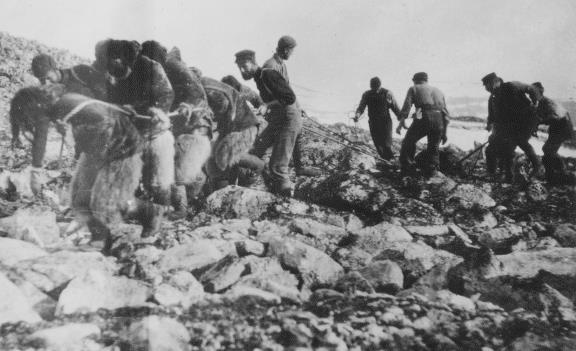
A huge iron meteorite (a type IIIA octahedrite), that fell as a shower - the largest known - more than 1,000 years ago and landed in Cape York, West Greenland. The meteorite's existence first became suspected when the explorer John Ross and his expedition, while searching for the Northwest Passage, encountered members of an Inuit tribe in northwestern Greenland in 1818 and were astonished to find that they had knife blades, harpoon points, and engraving tools made of meteoric iron. The area has no natural metal deposits, yet the plentiful supply of meteoric iron enabled the polar hunters to develop Iron Age technology to help them survive. The natives, however, would not divulge the location of their source of metal. Ross later had samples of the metal fragments analyzed and found them to contain nickel, leading Ross to believe that the source of the metal was meteoric.
Five expeditions from 1818 to 1883 failed to find the source of the iron until Robert Peary was led by a local guide, in exchange for a gun, to the site of the fall on Saviksoah Island off northern Greenland's Cape York in 1894. The meteorite was in three main chunks, known from Inuit folklore as Ahnighito (the Tent), weighing 31 tons, the Woman (2½ tons), and the Dog (½ ton). By this time, the native Greenlanders had greater access to imported knives, guns, spears, and needles, so by Peary's early 1890s visit, the location of the mass of metal was a less closely guarded secret. Over the next three years, Peary's expeditions managed to load the pieces of the metoerite onto ships despite severe weather, engineering problems, and having to build Greenland's only railway specifically for the task. Upon arrival in New York City, the source of Greenland's Iron Age was sold to the American Museum of Natural History for $40,000. Several more large masses have since been found and recovered from the strewnfield, including, in the 1960s, the 15-ton Agpalilik, thought to be the legendary "Man" and fourth member of the Cape York family.
The 3.4 m × 2.1 m × 1.7 m Ahnighito is now on display in the Arthur Ross Hall of the AMNH and is the largest meteorite in any museum in the world.
[Thanks to Tom Baione of the AMNH Library and to Nancy Hamilton for additional details]
A piece of the Cape York meteorite called "the Dog" being hauled from the site of the find, to the inlet where Peary's ship, the Kite, was anchored. Photo: Dartmouth College Library
A free template by Lucknowwebs.com for WYSIWYG WebBuilder 8
Meteor-ites
Copyright © by Nigel G Wilcox · All Rights reserved · E-Mail: ngwilcox100@gmail.com
Main Index
Space Cosmology
Designed by Nigel G Wilcox
Science Research
*
About
Science Research
Science Theories
Desk
Site Map
BookShelf
Powered By AM3L1A
Meteor-ites
Pages:
About 15 million years ago, ALH 84001 is believed to have been hurled from the surface of Mars when an asteroid or comet collided obliquely with the planet. Finally, it became the center of a major controversy in 1996 when scientists at the NASA Johnson Space Center, led by David S. McKay, claimed that they had found inside the meteorite very small fossils and other evidence of martian biological activity centered around the carbonate deposits.
of formation of the solar system, when the parent meteorite came together. The Allende meteorite also contains fine-grained, microscopic diamonds with strange isotopic signatures that point to an extrasolar origin; these interstellar grains are older than the Solar System and probably the product of a nearby supernova.
Pages within this section:
1
2
3
Sub-Menu
4
5
Meteor-ites
6
7
8
9
deposited rounded globules of carbonate minerals.


